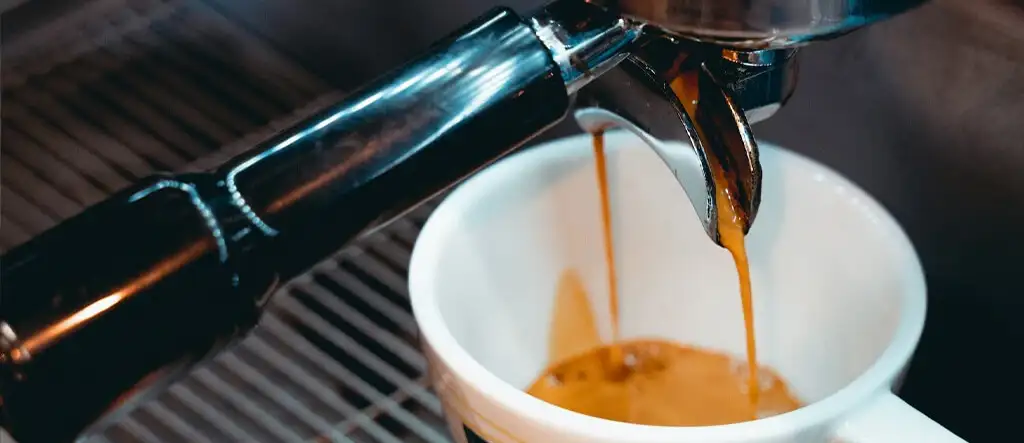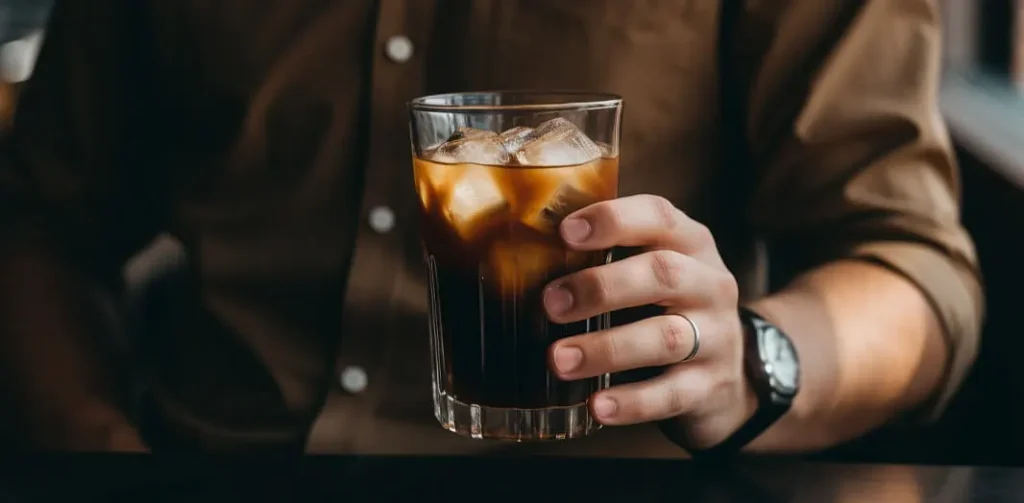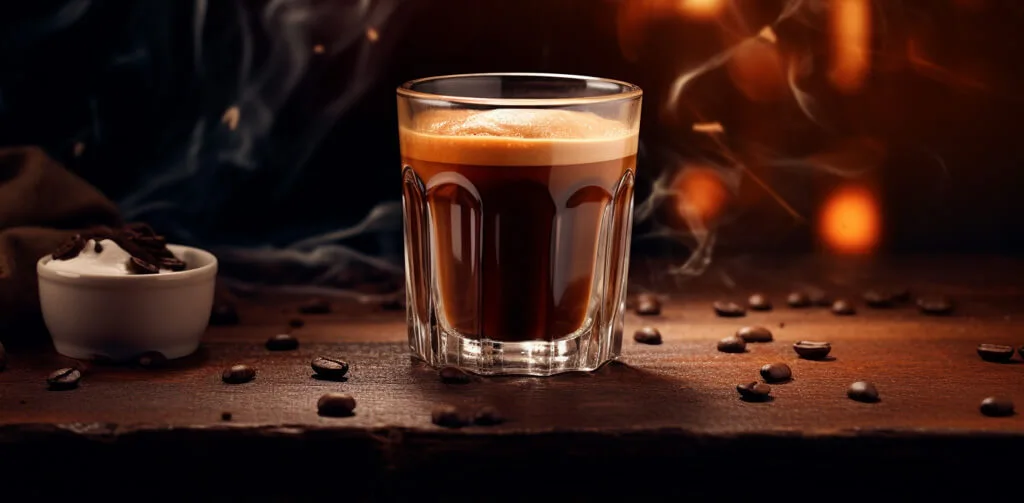If you’re a coffee lover like me, you understand how much we need our daily caffeine fix. Some days are worse than others, and on some days, nothing else can give us that needed energy like an espresso shot.
But how much caffeine is in espresso – and from there, what’s considered too much? Let’s look at these questions to ensure you enjoy that espresso without overdoing it.
The History of Espresso
To delve into the beginnings of espresso, the rich and intense drink coffee lovers enjoy, we need to go back to the 19th century. Italy is a country renowned for its artistic expression and intense fervor.
This is where our beloved espresso first flowed with the same smoothness we enjoy today. The origins of Espresso began with Italian inventors who were determined to create a faster method of brewing their beloved coffee.
They devised the idea of using high pressure to force hot water through finely ground coffee.
This is how espresso was born! The gadgets they invented then unleashed the rich, bold flavors we still enjoy in each shot.
Caffeine is the hidden element behind the buzz around espresso. While “espresso” may not sound very strong, it’s actually packed with caffeine. Coffee, the enchanting elixir made from beans, has been known to provide a jolt of energy since its discovery in Ethiopia.
But it wasn’t until espresso emerged that caffeine’s true potential was harnessed. The concentrated nature of espresso meant you could cram more caffeine into every sip.
So that is the captivating history of espresso. From the creativity of Italy’s inventors to the caffeinated kick we all crave, the espresso journey is as rich as the brew it produces.
And speaking of richness, let’s explore how much caffeine this bold elixir packs in its petite package.
We’ll also cover the average caffeine content per ounce of espresso and various factors that can impact its strength, including the type of coffee beans used, the brewing time, the type of shot, and more.
Understanding Caffeine Content in Espresso
When determining the caffeine content in espresso, an average one-ounce shot contains 64 milligrams. Compared to regular coffee, espresso typically has more caffeine per ounce than drip coffee.
The amount of caffeine can vary depending on the type of beans used, the length and brew time of a shot, and any dairy added to a beverage.
Average caffeine content in a one-ounce shot of espresso
The average caffeine content in a one-ounce shot of espresso is around 63-65 milligrams. That’s higher than an 8-ounce cup of coffee, typically around 95 milligrams. A shot of decaf espresso has almost no caffeine at all, as little as 8 milligrams per ounce.
However, the total amount of caffeine can vary depending on the type of coffee beans used and how the coffee is brewed. For example, Ristretto and Lungo shots have different concentrations because they are made with different amounts of hot water.
Also, establishing good habits like preparing lightweight or lower-caffeine espressos and moderating your intake can help you find the right balance.
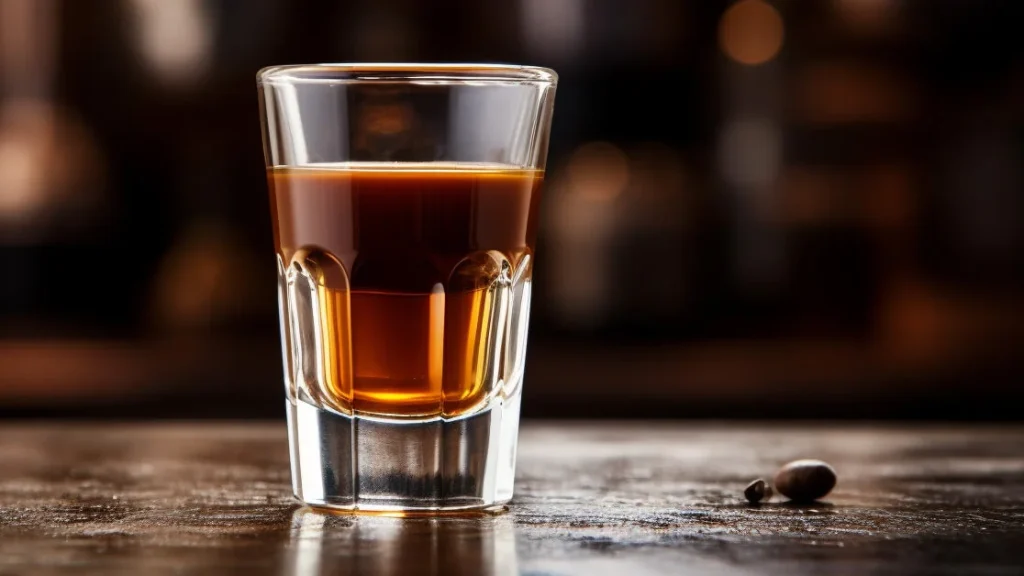
Comparing caffeine content in espresso and regular coffee
The average one-ounce shot of espresso contains 64 milligrams of caffeine, while an eight-ounce cup of coffee has 96 milligrams. Generally, espresso typically contains higher concentrations of caffeine compared to regular brewed coffee. However, the amount can vary depending on factors such as how much time is taken to brew it or the type of coffee beans used.
For example, a 12-ounce brewed cup may have 120 milligrams, while a 2-ounce double espresso shot may have just 80 milligrams. Therefore, understanding the serving size and composition is critical in determining how much caffeine you ingest daily.
Factors that influence caffeine levels in espresso
The amount of caffeine in a single shot of espresso can vary depending on a range of factors. These include the coffee beans used, the shot length and brew time for making it, and whether dairy is added to the drink.
For instance, using espresso roast beans results in higher caffeine levels than if milder beans are used.
Similarly, adjusting the quantity of water in relation to the coffee ground ratio significantly changes both taste and caffeine content—a Ristretto (short) pull yields less but more concentrated flavor. In contrast, Lungo (long) pulls produce more liquid with less potency per sip.

Lastly, adding dairy reduces caffeine concentration by diluting it without removing its stimulating effect on energy and focus levels that people love about drinking espressos.
Factors Affecting Caffeine Content in Espresso
Different factors, such as the type of beans used, shot length, and extraction time, can influence the caffeine levels in espresso. Dairy content, roast level, and coffee-to-water ratios can also affect the caffeine in one cup of espresso.
Type of coffee beans used
Two types of coffee beans, Robusta and Arabica, are typically used to make espresso. Robusta beans contain nearly twice as much caffeine as Arabica beans, making them ideal for those who desire a stronger hit of energy.
On the other hand, Arabica beans offer a milder taste with a nuanced flavor profile that is not quite as intense as its Robusta counterpart. Each bean’s amount of caffeine varies depending on how it’s roasted.
However, when averaged across different brands and roasts, you can expect about 1 ounce (30 ml) of espresso made from robusta beans to have roughly 63 milligrams of caffeine. In contrast, arabica will have around 38 milligrams per shot – which is still significantly more than what you’d find in one cup (8 oz) or regular drip coffee.
Knowing this information can help you make informed choices when selecting which type of bean to use for brewing your espresso shots if you’re looking for a certain amount of caffeine.
Shot length and brew time
Understanding the impact of shot length and brew time on espresso is essential for making a delicious cup with enough caffeine. Espresso shots have an average brewing time of about 20-30 seconds, depending on how it’s made.
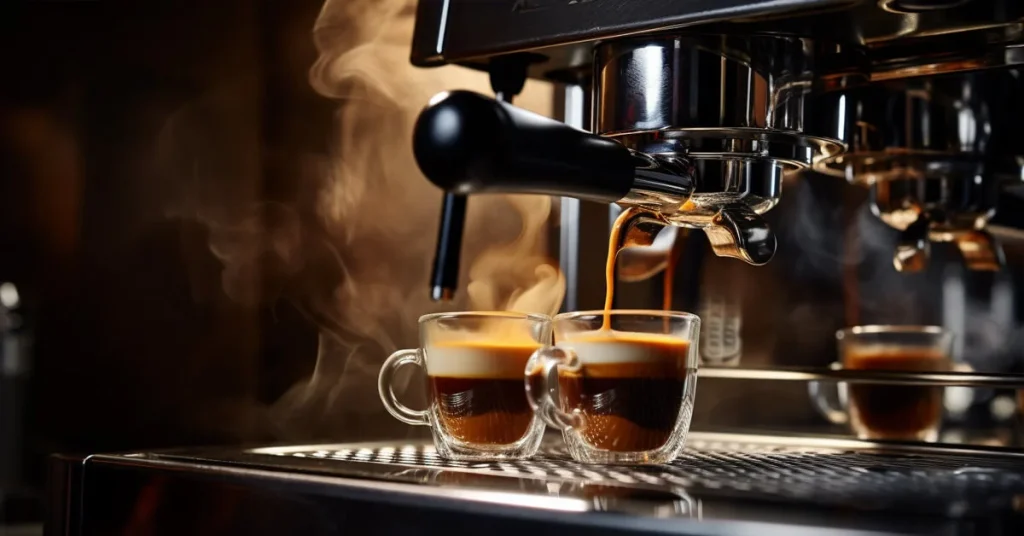
During this time, all available caffeine is released from the coffee grounds and suspended in hot water, which gives us our smooth espresso. The shorter the extraction time, the more intense the flavor will be, but also, less caffeine will be extracted from the coffee grounds compared to longer shots.
A ristretto shot has only half or one-third the caffeine of a regular two-ounce double espresso shot. However, it contains a much higher concentration of flavor compounds but less caffeine than a ‘regular’ espresso.
Similarly, longer brew times can increase the amount of caffeine extracted into each cup, as most will remain suspended even after a long extraction time due to its solubility in hot water.
Difference between ristretto, lungo, and normale shots
There are three main types of espresso shots, each with a different volume and caffeine content. A ristretto shot has half the volume of an average espresso shot but produces a higher potency concentrate due to its shorter extraction time.
In contrast, a lungo shot has two or three times more coffee than the average Espresso but is weaker in flavor intensity. Caffeine-wise, the Lungo typically contains more than an espresso – second only to Ristretto.
The standard one-ounce normale espresso provides a balance between these two extremes, combining flavor intensity with moderate caffeine levels.
Ultimately, understanding these distinctions can make all the difference when looking for increased levels of intense flavors and strength found within espressos such as macchiatos and cappuccinos!
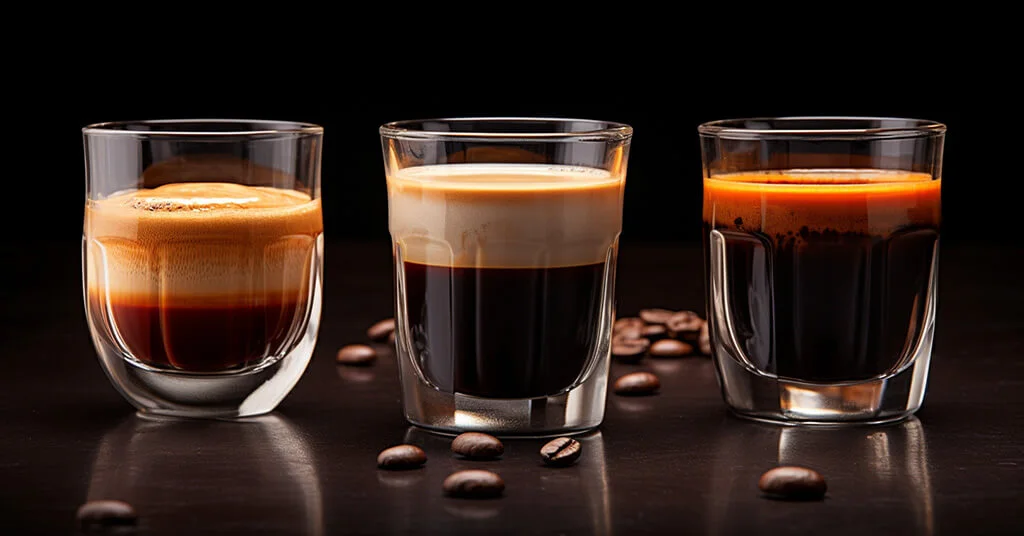
Dairy content in espresso
In espresso, cream certainly has its place in creating a delicious drink. However, an important consideration to be aware of when adding cream is the caffeine content.
Due to its variable fat content, cream or milk can dilute the concentration of caffeine in espresso and affect a drink’s flavor profile. Cream traditionally contains 15-50% fat; even small amounts may impact taste and mouthfeel.
On average, a one-ounce shot of espresso contains 63mg of caffeine, so if you need some energy but don’t like the bitterness, try adding milk instead; this will still give you a nice-flavored shot while reducing the overall taste intensity and coffee kick.
Determining the Ideal Caffeine Intake
Understanding an individual’s caffeine intake and its effects on the body is essential for attaining the desired energy boost. It also helps avoid any possible risks associated with excess caffeine consumption.
Recommended caffeine intake guidelines
Understanding the daily limits for safe and healthy intake is critical regarding caffeine consumption. According to the FDA, consuming up to 400 milligrams of caffeine daily is generally safe for adults.
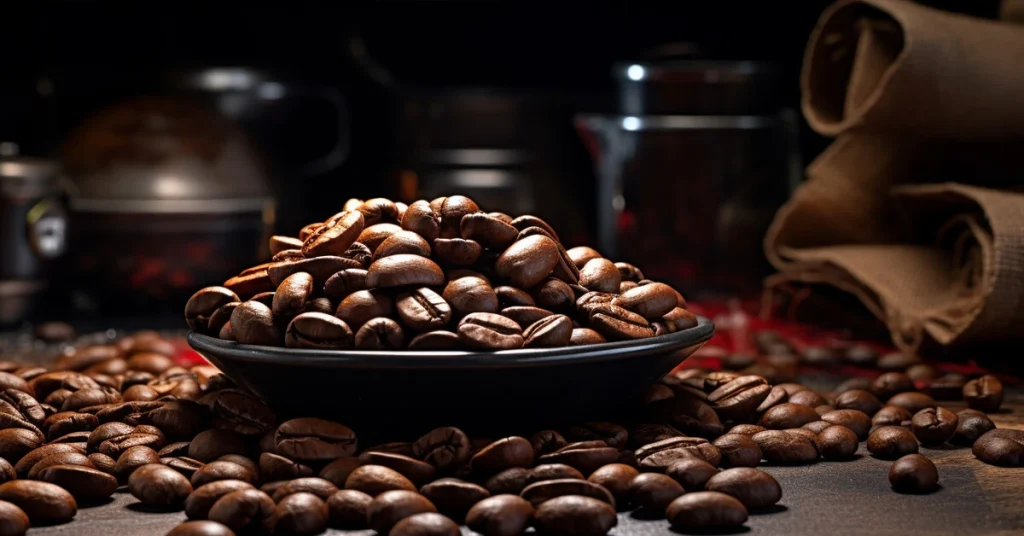
This amount corresponds to approximately four cups of brewed coffee daily or around two espresso shots. With that said, everyone’s ideal level of caffeine intake varies as individuals have varying physical constitutions and tolerance levels.
Therefore, it’s important to know your body composition to determine an ideal level of caffeine consumption.
Also, decaffeinated coffees may have minimal residual caffeine levels due to partial filtration; however, it’s relatively low compared to regular caffeinated coffees, where levels fluctuate.
Tips for moderating caffeine consumption
Moderation of caffeine intake is crucial to avoid overconsumption of coffee. Caffeine, a stimulant, can have adverse effects if taken excessively in one sitting or over a prolonged period.
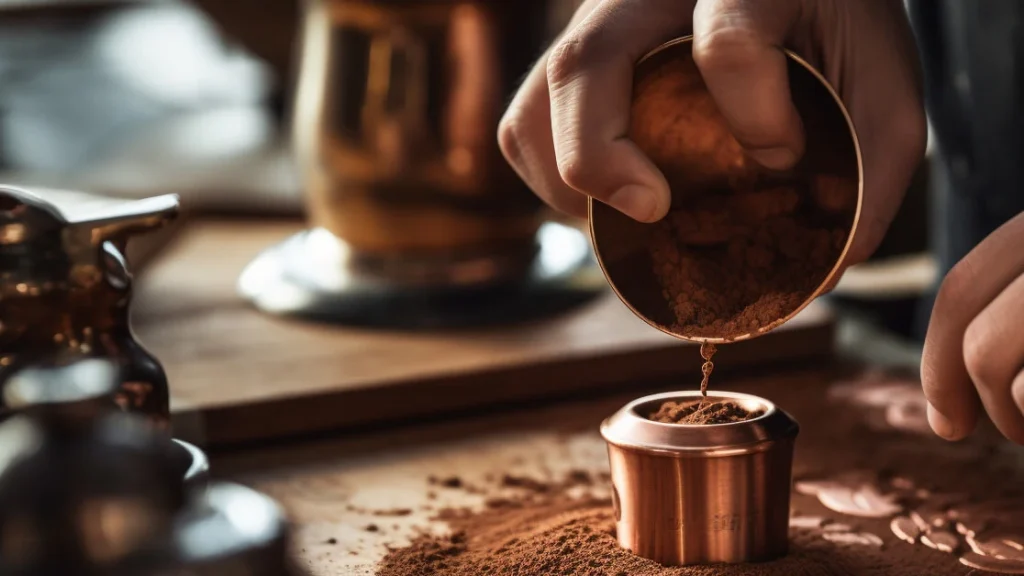
According to the Harvard T.H. Chan School of Public Health, the maximum recommended intake for healthy adults is up to 400mg daily, about four 8-ounce cups of brewed coffee daily.
Regular drinkers should be able to stay within this range without any issues by consuming 1-2 cups of espresso or 3-4 coffees.
Knowing the caffeine levels of different types and brands is essential when ordering espresso. Familiarize yourself with these amounts beforehand, especially if you order regularly.
Did you know that Lungo shots have more caffeine compared to Ristretto shots? While cappuccinos may have lesser amounts of caffeine, adding milk foam or cream reduces the caffeine content by around half.
To maintain a healthy balance, it is essential to keep track of how much coffee we consume throughout the day. Spacing them out at intervals will allow us to regulate ourselves better over time.
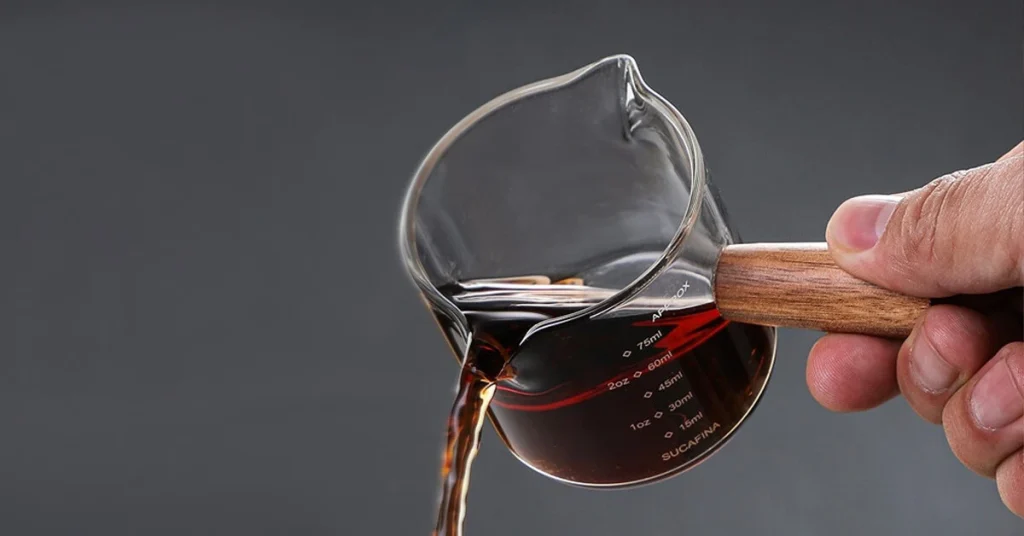
Debunking Myths About Caffeine in Espresso
Many people assume that espresso has a higher caffeine content than coffee. However, this is a false assumption. The amount of caffeine in espresso may vary depending on the type of beans, brewing method, and serving size.
Knowing these factors can help us understand how much caffeine we consume when drinking espresso or other caffeinated beverages.
Espresso does not always have higher caffeine content than coffee
It is worth noting that factors such as type and roast of coffee beans used, length, and brew time can play a significant role in determining levels of caffeine contained within our daily espressos and drip coffees.
Despite beliefs, espresso does not necessarily have a higher caffeine content than regular coffee. According to the United States Department of Agriculture nutrition data, a one-ounce espresso, on average, contains 63 mg of caffeine. In contrast, an 8-ounce cup of brewed coffee contains around 96 milligrams – thus debunking the myth that espresso packs more punch in terms of its caffeine level.
Furthermore, cream content can also reduce the amount you’ll get naturally occurring from your favorite cuppa joe! Therefore, it’s important to become an educated consumer about serving sizes and accurate measurements when considering both types.
The importance of understanding serving sizes
Understanding serving sizes is key to measuring caffeine content in a beverage. A popular myth is that espresso has higher quantities of caffeine than brewed coffee, but this isn’t necessarily true; while espresso can be more concentrated, the amount of total caffeine often depends on how much you’re consuming—with one ounce containing roughly 70mg compared to 20mg in a regular cup of coffee.
An 8oz espresso may contain more caffeine than an 8oz cup of regular drip-brewed coffee when measured by volume. Still, the usual serving size for an espresso shot is only 1 or 2 ounces—making its overall level lower.
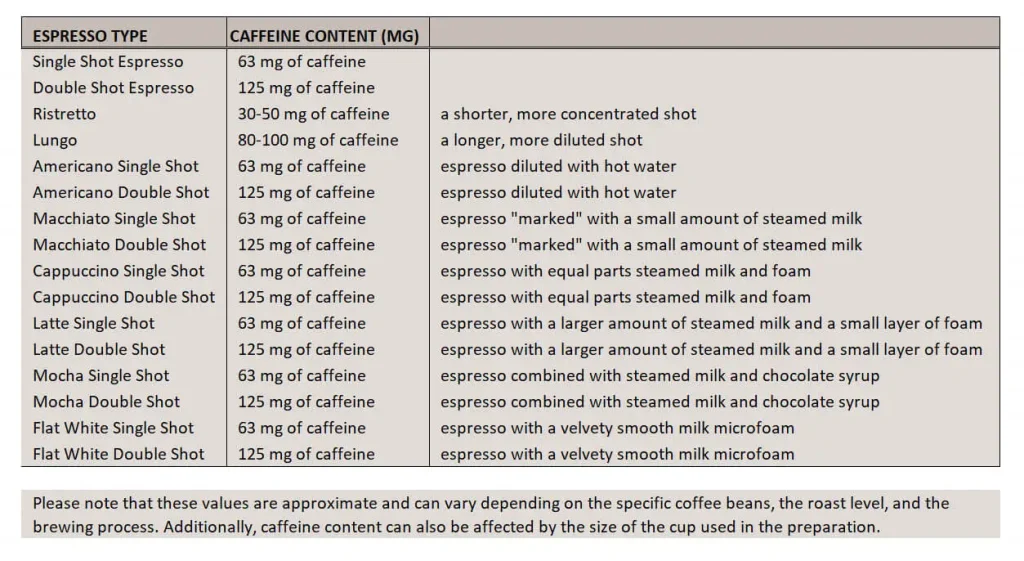
It’s also important to note that decaffeinated coffee still contains some traces of caffeine even though levels are much reduced. So next time you feel tempted to down several espressos thinking they have more energy boost than drip-brewed coffees–remember: smaller servings mean lesser amounts!
How Many Espressos are ‘Too Many’?
So, what is the perfect amount of espresso?
According to the caffeine content guide, on average, a shot of espresso contains approximately 63 milligrams of caffeine, which can boost energy. It’s important to note that sensitivity to caffeine can differ significantly. Some individuals may be able to consume multiple shots without any issues, while others may experience noticeable effects after just one. Like me, who often has to make a quick dash for the nearest bathroom as soon as possible.
Reputable health sources and studies have given us a rough ballpark for safe caffeine intake. Generally, around 400 milligrams of caffeine daily – about four to five espresso shots – is considered a moderate, safe zone for most adults. This amount lets you enjoy the caffeine perks without turning your pulse into a bongo drum rhythm.
The takeaway is that spreading your shots throughout the day like a well-timed symphony keeps your energy levels steady and your sleep cycle safe from late-night espresso revivals.
Remember, it’s your choice. Pay attention to what your body tells you. If your heart is thumping like a stereo on blast, you might want to ease up on the espresso throttle. Consult your healthcare provider for concerns or questions about coffee and caffeine intake.
Health Impacts of Espresso Caffeine
How does caffeine in your espresso shot affect your well-being?
Caffeine is what makes coffee so lively. In the case of espresso, it’s the main attraction. Healthcare research has revealed that consuming caffeine in moderation can give you the energy boost you need to tackle your day. It stimulates your brain, aiding in your ability to stay alert, focused, and perhaps even more content than usual.
Although espresso can be a great energy source, it’s essential to be cautious about consuming too much caffeine. Too much caffeine can cause your heart to race and lead to jitters. You may be able to relate to this.
Oh, and let’s not forget about the sleep thief. Sipping espresso too close to bedtime could leave you staring at the ceiling instead of catching those Z’s. And trust me, Beauty Sleep is a non-negotiable contract we’ve all signed.
So, what’s the takeaway? Like a balancing act, moderation is key. Thanks to its caffeine content, a shot or two of espresso can rev up your engines and boost your mood. However, going overboard might lead to a caffeine rollercoaster that leaves you more frazzled than focused. Remember, each sip should be savored, not hurried.
If you’re curious about how caffeine affects your health, talk to your healthcare provider to confidently navigate your coffee consumption.
That’s A Wrap
Espresso is the perfect way to get a quick energy boost. An average one-ounce shot of espresso contains 64 milligrams of caffeine, while an 8-ounce cup can contain as much as 127 milligrams! Espresso has the highest caffeine content per ounce compared to other coffee types, such as drip or cappuccino.
To ensure you get your desired amount of caffeine, it’s vital to understand serving sizes and factors affecting its intensity, like the type of beans and roast used for making espresso.
Moderating daily intake also plays a role in keeping track of how much caffeine you consume from your favorite beverages, including espresso shots – whether they be lungo, normale, or ristretto! Enjoying your cup of espresso just got easy with knowledge about different brewing methods and levels caffeinated drinks have to offer.

